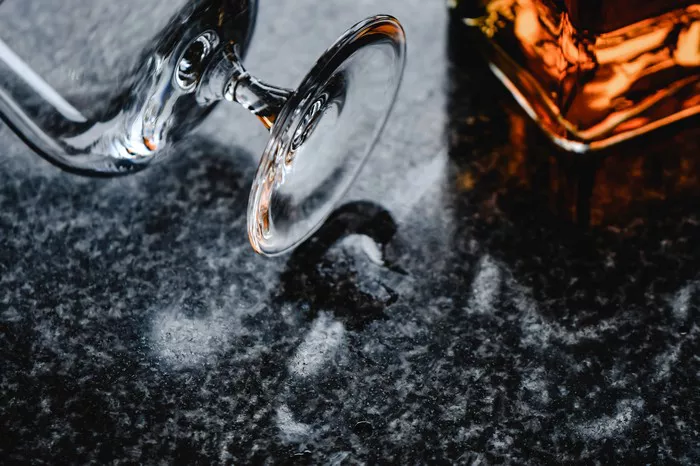Gin, renowned for its versatility in cocktails and its distinct botanical flavor, has a rich history and a complex production process. If you’ve ever wondered how gin is made, join us on a journey through the fascinating world of gin production.
1. The Essential Ingredients:
Before we delve into the gin-making process, it’s crucial to understand the primary ingredients that give gin its signature taste:
a. Neutral Spirit: The base of gin is a neutral spirit, typically derived from grains like wheat, rye, or corn. This spirit serves as a canvas for the infusion of botanical flavors.
b. Botanicals: The defining characteristic of gin is the use of botanicals, primarily juniper berries. Beyond juniper, a wide range of botanicals, such as coriander, citrus peel, angelica root, and more, are used to create unique flavor profiles.
c. Water: High-quality water is essential to dilute the spirit and create the desired alcohol content.
2. The Gin-Making Process:
Creating gin is a meticulous process that involves distillation and infusion. Here are the key steps:
a. Maceration: Botanicals, including juniper, are added to the neutral spirit. This mixture is allowed to macerate, infusing the alcohol with flavors. The duration and choice of botanicals are critical for the final flavor.
b. Distillation: The macerated mixture is then distilled. This involves heating the liquid to create vapor and then condensing it back into liquid form. The vapor passes through a column or a pot still, extracting the desired flavors from the botanicals. This process is often repeated to enhance the botanical infusion.
c. Dilution: After distillation, the concentrated gin is diluted with pure water to reach the desired alcohol content, typically around 40% ABV (alcohol by volume).
d. Filtration: Some gin producers choose to filter the spirit to remove impurities and achieve clarity.
e. Bottling: The final gin is bottled and often labeled with the botanical ingredients used and any other relevant information.
3. Types of Gin:
There are several types of gin, each with its unique production method:
a. London Dry Gin: This is the classic and most widely recognized style of gin. It is known for its dry and juniper-forward flavor, with no added sweeteners or flavors after distillation.
b. Plymouth Gin: Produced in the historic Plymouth Distillery in England, this gin has a slightly sweeter and less juniper-forward profile than London Dry Gin.
c. Old Tom Gin: A historical style that predates London Dry, Old Tom Gin is slightly sweeter and more botanical-forward. It’s often used in classic cocktails like the Tom Collins.
d. New American or Craft Gins: These gins are known for their creativity and use of locally sourced botanicals. They often emphasize unique flavor profiles.
4. Craftsmanship and Artistry:
Gin-making is as much an art as it is a science. Distillers carefully select botanicals, balance flavors, and fine-tune their distillation processes to create distinct and memorable gins.
Conclusion: A World of Gin Awaits
The process of making gin is a testament to the craftsmanship and artistry of distillers who aim to capture the essence of botanicals in each bottle. Whether enjoyed in a classic cocktail or sipped neat, gin offers a world of flavors and possibilities waiting to be explored.
FAQs related to the topic of “How Do You Make Gin?”
1. What is the origin of gin, and how has its production process evolved over time?
Gin has a rich history dating back to the Middle Ages. Its production process has evolved, with different styles and techniques emerging over the centuries.
2. What are the primary botanicals used in gin production, and how do they contribute to its flavor profile?
Juniper is the key botanical, but there are many others, such as coriander, citrus peel, and angelica root, that impart unique flavors to gin.
3. Can you explain the difference between a London Dry Gin and other gin styles like Old Tom or New American Craft Gins?
London Dry Gin is known for its traditional, juniper-forward flavor, while Old Tom Gin is slightly sweeter, and New American Craft Gins are more creative, often using locally sourced botanicals.
4. Are there regional variations in gin production, and do different countries have their unique styles of gin?
Yes, various countries have their styles and traditions of gin production. For example, London Dry Gin and Plymouth Gin are associated with England, while different countries produce craft gins with distinct flavors.
5. What is the significance of the distillation process in gin production, and how does it affect the final flavor?
Distillation is critical for extracting flavors from botanicals and creating the gin’s character. The choice of still and the number of distillation runs can influence the flavor profile.
6. Are there any regulations or guidelines that govern the production of gin, ensuring quality and authenticity?
Yes, many countries have regulations that define what can be labeled as “gin.” These regulations often specify the minimum alcohol content and the use of natural botanicals.
7. Can you provide insights into the different ways people enjoy gin, such as in cocktails or as a standalone spirit?
Gin is incredibly versatile and can be enjoyed in various ways, including classic cocktails like the Martini, Negroni, and Gin and Tonic, as well as neat or on the rocks.
8. Are there any recent innovations or trends in the world of gin production that have gained popularity among enthusiasts?
The craft gin movement has led to numerous innovations, with distillers experimenting with unique botanicals, aging techniques, and flavor profiles to create distinct gins.


